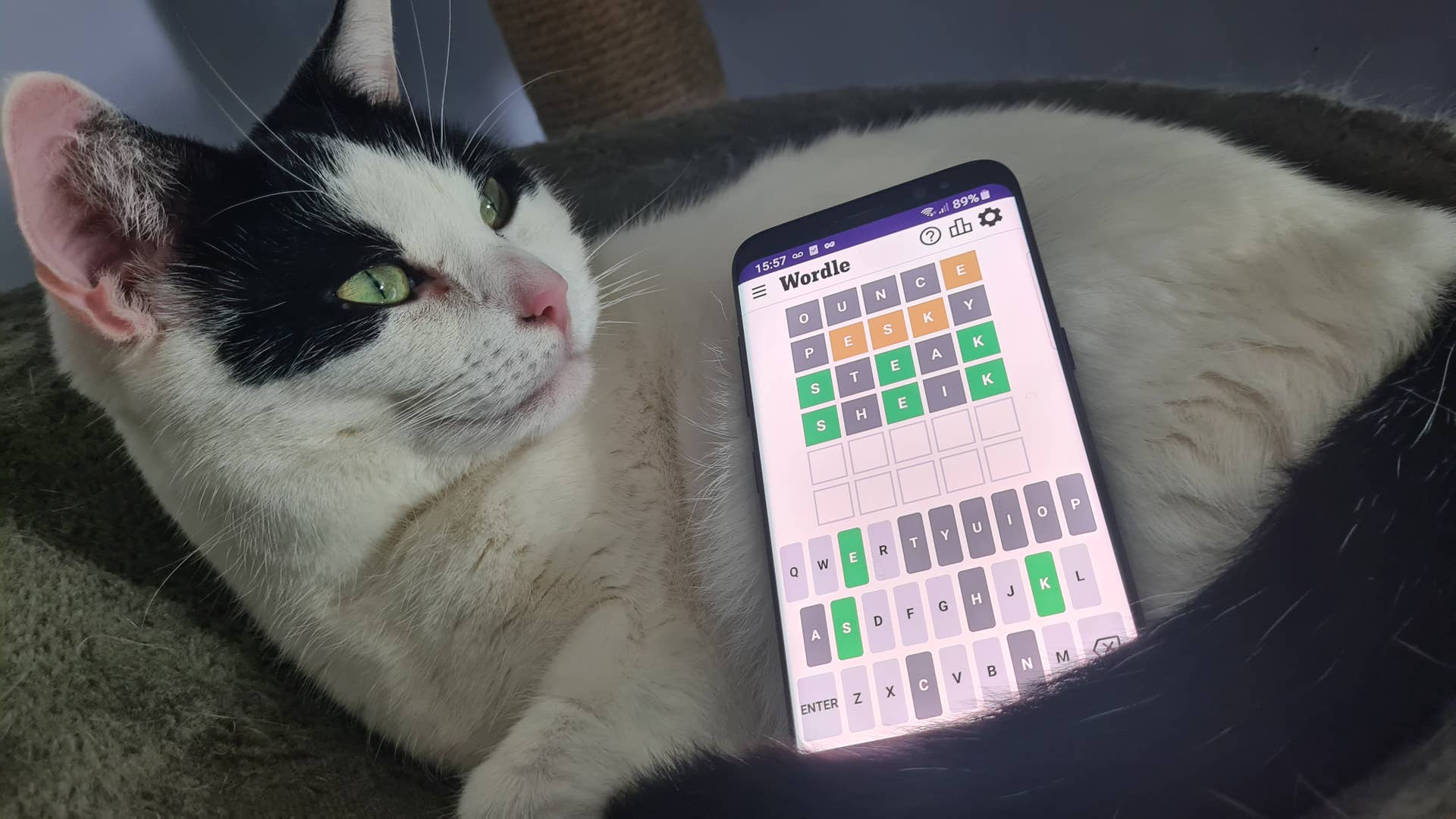
The Surface Pro 9 has a couple things going for it. When paired with a matching Signature Keyboard cover, the 13-inch tablet feels more like a true laptop experience than an iPad or Android device with a similar form factor. And when paired with Microsoft’s Slim Pen 2, it offers a smooth drawing and note-taking experience. Those advantages come with some quirks, though: Its very large 3:2 form factor makes it an unwieldy reader, and its unique capabilities don’t play nice with some apps, so you aren’t getting the best possible Windows experience. It’s a little different, and that’s nice – except when it isn’t.
This is no different than Surface Pros past. In fact, aside from a new configuration with an ARM-based chip and mobile 5G support, there’s very little that’s meaningfully different about the Pro 9 compared to its predecessors. The models with Intel chips – which you’ll want if you plan to play games on it – feature upgrades to 12th-Gen Intel Core U-Series processors and LPDDR5 RAM, but nothing that’s going to make Microsoft’s tablet line more appealing than before. (Unless you like to plug in your headphones, in which case, I’m very sorry.)
Microsoft Surface Pro 9 – Design & Features
Admittedly, the Surface Pro 9 looks very slick. Measuring 11.31 x 8.19 x .31 inches (WDH), The 3:2 anodized aluminum slate is large, but thin. It weighs 1.93 pounds, or 2.57 pounds with the keyboard and pen attached, so it’s easy to carry around.
Its size and dimensions are ultimately tuned for tabletop use, though. It’s arguably too much screen to hold up close to your face like you would a tablet or phone. Not to mention that, even with the touchscreen, we’re using Windows 11 here so neither the operating systems nor the software is optimized for “mobile” workflow the way iOS and Android are. Again, this is nothing new for the Surface Pro line: It has always implicitly hewed toward a productivity “laptop replacement” more than the conventional mobile-style tablet. Given the $1000-$2,600 price range, you might argue that’s implied, but flexibility is one of the core advantages of a tablet.
Much of the design in the Surface Pro 9 remains unchanged after the more substantial redesign in last year’s Surface Pro 8. It features a 2880 x 1920p, 10-point multi-touch display, which outputs at a smooth 120Hz and supports Dolby Vision HDR. The display features comparatively large bezels, which make room for a Windows Hello-compatible 1080p front-facing camera and a dual-microphone array for video calls and recording. (On the back, you’ll find a more powerful 10MP camera that can shoot 4K photos and video.) The bezels are thicker on two sides – the webcam-laden “top” and “bottom” in landscape mode – reinforcing the idea that you should default to setting it up like a laptop. (The wide and very effective built-in kickstand says the same thing.)
In keeping with the Surface Pro 9’s minimalist aesthetic, you’ll find just a few connection options around its edges: All of your conventional devices – peripherals, hard drives, external displays – route through two Thunderbolt 4 ports. You also have a proprietary charging port and a bespoke two-point connection for the Surface Type Cover keyboard. That’s more I/O than you usually get from a tablet, but you may find it wanting if you begin using the Surface Pro 9 as a laptop replacement. It’s worth noting that Microsoft ditched the 3.5mm headphone jack this year, which could be a problem for gamers and audiophiles looking to use wired headphones.
Let’s talk about peripherals for a second. Though they are sold separately, the Surface Signature Keyboard and Slim Pen 2 are effectively mandatory to use the Surface Pro 9 effectively. They both work well. As in the past, drawing, note-taking, and other touch-based applications are some of the Surface Pro’s strong suits. The Surface Slim Pen 2 feels comfortable in-hand and provides tactile feedback to make the stylus feel natural.
The Surface Pro Signature Keyboard cover isn’t my favorite keyboard: It provides just enough travel to prevent you from feeling like you’re slamming your fingers into your desk, but the keys feel as thin and flat as they look. Likewise, the trackpad is very small and harder to use effectively than the larger versions you’ll find on most laptops. That said, it’s extremely convenient to have a keyboard that connects and disconnects instantly, while doubling as a cover and stylus holster.
My biggest issue with both devices, really, is the fact that you have to pay extra for them. Truly, given its unwieldy size and reliance on Windows 11, I would feel very constrained if I tried to use a Surface Pro 9 without a keyboard, trackpad (or mouse), and the stylus. They should be included in the base price of the device and, after nine iterations, it’s a bit obnoxious that Microsoft still gouges an extra $279.99 out of users for the privilege of using the machine as intended.
Microsoft Surface Pro 9 – Configurations and Performance
For the Intel-based models like the one I’ve been using, the biggest update is realistically the standard jump to new 12th-Gen Intel Core U processors. The base model features a Core i5-1235U. Our review unit has the more powerful i7-1255U. For reference, Intel U-series chips are designed to maximize power efficiency – and by extension battery life – often at the expense of raw compute power. On the graphics side, both models rely on Intel’s Iris Xe integrated graphics, so you shouldn’t expect high performance out of most games.
They also feature snappier, upgraded LPDDR5 RAM, though how snappy comes down to whether you stick with the base 8GB or upgrade to 16GB or 32GB. The Surface Pro 9 relies on an internal SSD for storage, in options ranging from 128GB to 1TB.
The largest innovation, however, is an entirely new configuration powered by entirely different chips. In addition to the Intel models, Microsoft now offers a “Surface Pro with 5G,” which features an Microsoft-designed ARM-based SQ3 processor instead of an Intel CPU. According to Microsoft, the 5G configuration is less powerful, but gives you better battery life and access to mobile broadband. I haven’t had hands-on time with this version, but reviews from other outlets have indicated that the ARM-based model may have more performance issues than the Intel models.
My review unit – an i7 model with 16GB of RAM and 256GB of storage – generally feels very snappy in general use – web browsing, processing, and when using the stylus. The back of the tablet will get warm after extended use, but you won’t feel it in the keyboard since the hardware is all in the tablet.
Unsurprisingly, given that it’s a convertible, hybrid device with integrated graphics, the Surface Pro 9 features less-than-stellar benchmarks. In Geekbench 5, the Surface Pro produced 1590 single-core and 7350 multi-core compute scores. For reference, that’s slightly lower than average tests on Intel’s 11th-Gen desktop chips. It received a 3,911 score in PCMark 10’s overall compute test, far lower than most gaming laptops.
Unsurprisingly, it also fared especially poorly in 3DMark’s graphics benchmarks. The Surface Pro 9 got a 1,460 in Time Spy, a 3,950 in Fire Strike, and a 12,679 in Night Raid. These scores not only fall short relative to the best gaming laptops, but are actually lower than what we got out of the Surface Pro 8 when we benchmarked it last year.
One bright spot for the Pro 9, however, is battery life. Though its 47.7Wh battery is smaller than the Surface Pro 8, it lasts longer, squeezing an estimated 15.5 hours out of a single charge. That matched my own experience: I usually got about a day and a half out of the Surface Pro 9 before needing to charge, though it obviously burned battery more quickly when playing games.
Microsoft Surface Pro 9 – Gaming
As you might expect, given the specs and benchmarks, the Surface Pro 9 is not much of a gaming machine. Even with the most powerful processor available, it will struggle to play new AAA games on anything above low settings. Overwatch 2, for example, ran at a smooth 60 frames per second on low settings, but fell apart the moment I tried to use higher settings. It can handle Mortal Kombat 11 in 1080p at 60 frames per second on Low, though even that may not look quite right for competitive players. Some games run fairly well, though: Doom (2016) oscillated between 30 and 45 fps with some stuttering at Ultra settings, and ran at a smooth 45-60fps when you dropped it down to high settings.
It’s also worth noting that Early Access games and pre-release betas may experience additional issues on the Surface because of its unique interface. I tried playing Marvel Snap in its first week and found it nearly unplayable due to issues with the touch screen. Those issues have since been resolved – the game controls perfectly now – but I didn’t experience any such issues on any of the other devices I used to play Snap, including my Windows desktop, Macbook Air, an iPhone 14, and M1 iPad Air.
Given all the issues here, I think it’s important to point out that the Surface Pro 9 is really not a gaming machine, and its performance reflects that. It’s primarily built for portability and a couple of specific uses, like note-taking. Really, it’s a perfect example of the kind of device that pairs well with game streaming services like Xbox Cloud Gaming and Nvidia GeForce Now, since it has a large, sharp screen that can make a game look great, but lacks the GPU performance to bring it to life.
Purchasing Guide
The Microsoft Surface Pro 9 is available now in all configurations and colors from Microsoft Store and retailers, including Amazon and Best Buy. Prices start at $999.99 for the basic Intel i5 model, up to $2,599.99 for the i7 model with upgraded memory and storage. The model we received for review (Core i7U, 16GB RAM, 256GB SSD storage) is available for $1,599.99.
The Microsoft Surface Pro Signature Keyboard and Slim Pen 2 are also available now from the Microsoft Store and electronics retailers. The Keyboard costs $179.99, the Slim Pen 2 costs $129.99. You can also purchase the two together as a bundle for $279.99.






